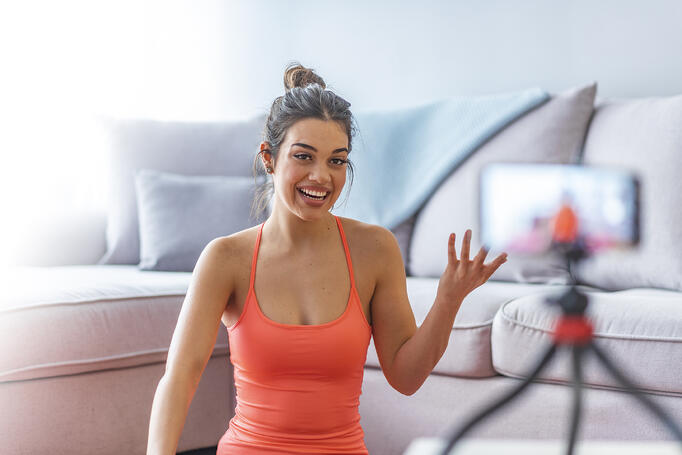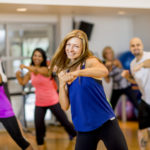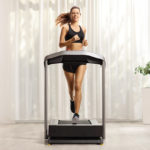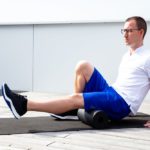When creating and recording an effective health video, there are some important steps to consider. The following tips will help you get started, especially if this is your first time recording videos for an online class.
To help you along the way, it is important to realize your primary objective, plan and prepare effectively, and keep in mind recording logistics that are crucial.
Try our group health digital training mini-course for more information on recording videos, converting your group health classes to digital format and other topics.
Step 1: Identify the main objective of your health video
Before you begin to report, it is important to define the main objective or goal of the video. Asking yourself questions like “Why is this video important?” or “What is the main result I want to achieve?” will help you determine the goal behind the video.
Once you have a clear idea of your goal, it is much easier to plan and execute the necessary steps. It is important that the steps are challenging if the video’s goal is to provide a quality intermediate step workout. The video should also not detract from the actual exercise. If the goal of the video is teaching on a specific subject or promoting health services, you will need to ensure that there is enough content to interest your audience. Planning is easier when you know the primary motivation for recording the video.
Step 2: Create your digital exercise
Preparation is second, as was mentioned above. By taking the time to plan out what the video will include or cover, you will increase the chances of achieving your goal. You can also decide on the specifics of your video during the preparation phase. Here are some examples on how to prepare:
Decide what you want to teach your people.
Define your main points and the order in which you will share them.
Decide on the main theme for your exercise video. If you are teaching a power class you might decide to focus on urgent actions.
Plan the exercises you will show in the class, and their order.
Consider which disclaimers or cues to include in the video. It can be used for both instructional or exercise videos.
Analyze and ensure that you can source the necessary items.
Step 3: Follow the steps!
Once you have planned everything, you need to practice what you will say and how you will say it. You will be more prepared to start recording if you have practiced beforehand. Preparation is important when you are nervous and want to record.
Likewise, practice the exercises that you plan to show in the video. This is similar to preparing for a live fitness class. In both cases, you should check out the exercises first to ensure that you can successfully perform the movement before instructing others. You should only choose workouts that you can comfortably and safely perform on video, as people will consider you an expert.
Step 4: Select the best time of day, atmosphere, and digital camera location to document
You can choose to record the best atmosphere available to you. Ensure that you choose a clear and simple atmosphere so that it doesn’t distract from the video. In addition to deciding on the environment, decide the best time of day for reporting. Choose a time of day and a place where exterior lighting and noise will be to your advantage.
Remember to keep the lighting in check when recording the environment. Before you start recording, it’s recommended that you check out the video quality of your system and make any necessary changes to the equipment used.
Next, choose the best digicam place to be able to capture a variety of angles or views whereas recording. This is especially important if you’re demonstrating exercises in the video. It is helpful to show a movement from the front, side, and back views. This can help people better understand it. Don’t be surprised if it takes longer or you need to report more than once. Nerves can affect the quality of movement, voice tone, and pronunciation when being recorded.
Step 5: Create a video introduction
You should introduce yourself, the audience for the video and the desired outcome of the video. This is important to ensure that the viewers buy into the goal you set at the beginning.
Step 6: Provide Cues and Reminders
If you’re recording a video of a fitness exercise, make sure to include safety and hydration tips. Be sure to stress the importance of resting and not pushing through pain. It is important to inform people if a particular academic tip or exercise is not recommended. This is similar to the safety and hydration messages. If you are teaching a shoulder resistance training exercise, make sure to point out that overhead movements like a press on the shoulder may be contraindicated if someone has hypertension. If contraindications exist, make sure to explain any necessary modifications.
Step 7: Bring your character to the group train exercises
Throughout the entire planning and implementation process, let your character shine through. You may feel nervous when recording yourself, but sharing your personality will keep viewers engaged throughout your entire video. Do not be afraid to smile and add humor. Most importantly, just be yourself.
You can learn more about this topic by exploring the NASM Online Well-Being Coach Bundle, which includes digital teaching, nutrition, and traditional private training.











